If the condition progresses positively, try performing the same exercise with the help of a stable surface.
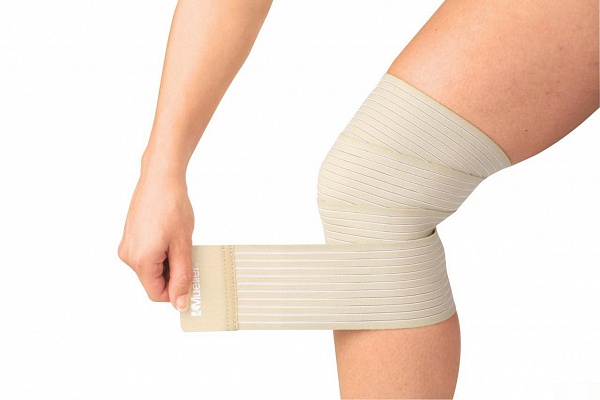
- Medication for osteoarthritis in the knee
- Medications used when osteoarthritis worsens.
- Early phase.
- medication
- massage
- Later period
- Nourishment
- massage
- therapeutic exercises
- When is knee surgery necessary?
- contraindications
- endoprosthetics
- endoprosthetics
- contraindications
- Knee joint bandaging techniques
- Costs
- I suffered from knee pain. I went to the doctor and was diagnosed with second degree arthritis. They prescribed ointments for me, but I don't know how to use them correctly.
- I was diagnosed with third degree deformity arthritis. I am on the waiting list for a knee replacement, but I have pain in both. How can I support myself?
- Osteoarthritis treatment: symptoms, drug treatment, opinions
- How do you treat osteoarthritis in the knee?
- Non-surgical treatment of knee osteoarthritis
- Medication for osteoarthritis
- materials
- Proper use
Medication for osteoarthritis in the knee
Osteoarthritis is a degenerative-dystrophic disease of the joints in which changes to the articular cartilage occur. In a later phase, bony deformation of the articular cartilage occurs. The main symptoms of osteoarthritis are pain and restricted movement in the affected joints.
You can read about the causes, symptoms and diagnosis of osteoarthritis here or here.
Pharmacological agents play an important role in the treatment of knee osteoarthritis.
All drugs for the treatment of knee arthrosis can be divided into several groups depending on their application:
Medications used when osteoarthritis worsens.
An exacerbation is manifested by an increase in pain in the knee joints. It is characterized by start-up pain (which occurs in the knee joint when taking the first steps after lying or sitting for a long time) and pain when walking. If inflammation is severe, synovitis can develop.
They work by inhibiting cyclooxygenase (COX), the enzyme responsible for the production of inflammatory mediators. There are two types of COX, COX-1 and COX-2. Inhibition of COX-1 causes most of the side effects of NSAIDs - for example, damage to the stomach lining. Suppression of COX-2 has a greater effect on inflammation.
First-generation NSAIDs are non-selective, meaning they inhibit both COX-1 and COX-2. Consequently, their anti-inflammatory and analgesic effects are slightly stronger, but the risk of side effects such as gastrointestinal bleeding is higher.
The most commonly used non-selective COX inhibitors include.
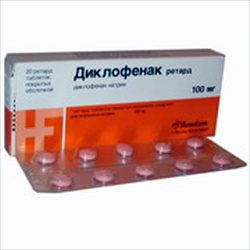
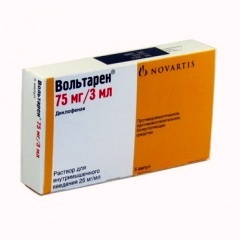
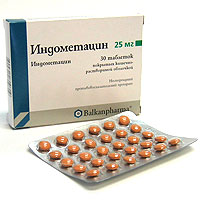

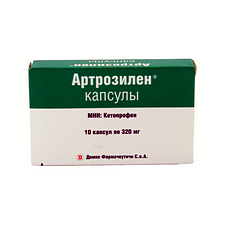
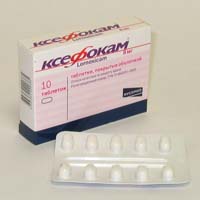
Second-generation NSAIDs selectively inhibit COX-2, so side effects are less likely, but the anti-inflammatory and analgesic effects are slightly weaker. This includes:

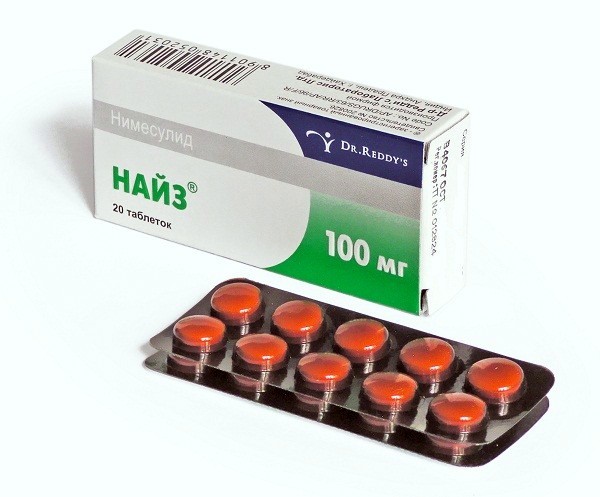
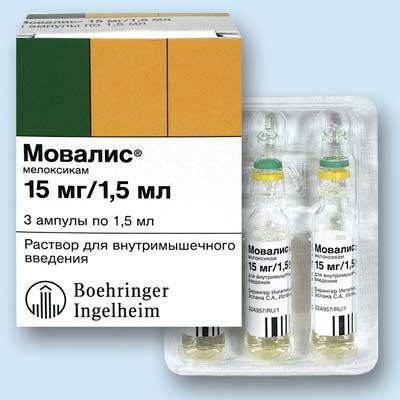
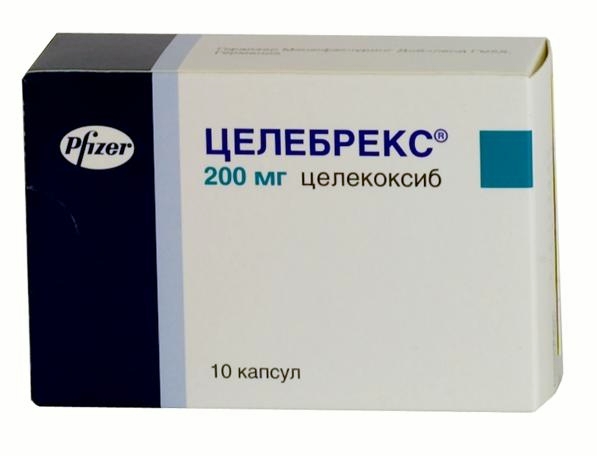
Early phase.
Immediately after arthroscopy, the patient must be under medical supervision. The length of hospital stay depends on the extent of the arthroscopic procedure. On average, the patient is observed for one day and the maximum hospital stay is 72 hours. During this period, the most intensive rehabilitation measures are carried out.
When will I be able to walk again after knee arthroscopy? If only a knee puncture was performed, you will be able to walk almost immediately after the arthroscopy. You stay in bed for 3 to 4 hours, after which you can initially walk with a cane and later independently. Prolonged bed rest is recommended if the ligaments or meniscus of the knee joint have been operated on.
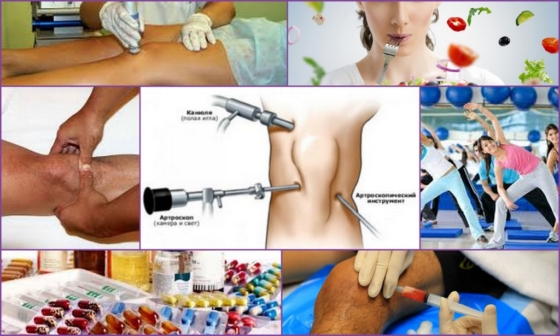
medication
Broad-spectrum antibiotics are prescribed as soon as possible after surgery. Their goal is to prevent inflammation in the joint. Antibiotics are prescribed for 3 days, after which they should be taken to restore intestinal microflora – Linex, Hilac Forte.
Pain in the knee or hip joint may occur in the first 24 hours. To eliminate this symptom, non-steroidal anti-inflammatory drugs are prescribed – Movalis, Nimica, Diclofenac.
In case of increased blood clotting, a short course of anticoagulants - heparin, Curantil, aspirin - is prescribed.
massage
Massage of the knee joint is performed manually or using a device. The aim of massaging the knee joint after arthroscopy is to reduce swelling and relax the muscles of the leg. The massage is performed near the joint. Stroking and rubbing movements are carried out with low intensity.
Later period
After you are discharged from the hospital, you will receive instructions on how to recover from your knee arthroscopy at home. Pain medication will continue as needed. Chondroprotectors such as Dona, Teraflex, Artra are indicated for strengthening and rebuilding cartilage tissue. These are prescribed for long-term treatment.
The main goal in the late postoperative period is to restore limb function. It is necessary to monitor the condition of the sutures remaining after the operation. If signs of sclerosis appear, it is advisable to see a doctor immediately.
Nourishment
Good nutrition after arthroscopy is important. The operation is accompanied by cartilage and bone damage. Therefore, the diet of a person who has undergone such a procedure should contain foods that help strengthen these tissues:
It is advisable to avoid alcohol, smoked and preserved foods, and hot spices. It is helpful to eat in small portions 5-6 times a day. The food should only be thermally processed to a very small extent. For additional calcium intake, powdered eggshells or calcemin preparations are recommended.
massage
Rehabilitation after late-stage knee arthroscopy includes continued massage. In contrast to the early postoperative period, a more intensive and longer massage of the joint itself is allowed. Special massage oils, pain-relieving and anti-inflammatory ointments are used.
therapeutic exercises
Knee joint healing exercises after arthroscopy include:
- On the first day, exercises with light weight on the leg - raising the limb with moderate joint extension;
- Static exercises – lying on your back, the legs are bent at the knees, the pelvis is raised and held for a few seconds;
- Dynamic – while lying down, lift the straight leg, then bend at the knee and lower it to the floor;
- Squat with support from a wall;
- Forward lunges with knees bent;
- Forward and side leg curls.
When is knee surgery necessary?
The following diseases are indications for knee surgery:
arthrosis
- Destruction of cartilage (both total and partial), including that which causes osteoarthritis.
- Pain that is not relieved by taking painkillers.
- Restriction of movement of the knee.
- Deformation of the knee joint due to trauma, infectious process, etc.
- Severe obesity.
Diseases such as rheumatoid arthritis, gout and ankylosing spondylitis are also contraindications to joint surgery.
contraindications
Contraindications to surgery include, but are not limited to, the following conditions:
- Infectious lesions and paralysis of the lower limbs.
- tuberculosis and diabetes.
- Tendency to bleeding and venous thrombosis.
- Malignant tumors.
- Decompensated cardiovascular and respiratory diseases.
- Psychiatric illnesses.
endoprosthetics
Advanced osteoarthritis sooner or later requires an endoprosthesis of the joint. Endoprosthetics is the mainstay of treatment for affected patients. Millions of such operations are performed worldwide every year. They are increasingly effective and safer.
The patient's own joint is removed. An artificial endoprosthesis is used in its place. It is so functional that the affected person can lead a physically active life. Even operations that have been carried out for decades have usually proven successful. Today their effectiveness is even higher because:
endoprosthetics

endoprosthetics
- Computerized navigation systems are used to calculate all angles, distances and biomechanical axes during implantation;
- new and higher quality artificial joints are created that are almost completely areactogenic (are not rejected by the body), are highly functional (offer a large range of movement) and can last for decades;
- Minimally invasive techniques are used to insert the artificial joints with minimal damage to soft tissue, reducing rehabilitation time and the risk of complications.
The patient is recommended to put weight on the operated leg on the first day after the endoprosthesis. Rehabilitation takes several months. After six months or more, the patient can fully bear weight on the operated leg.
contraindications
There are a number of conditions in which the use of compression bandages, including elastic bandages, is contraindicated. These diseases include:
- Obliteration (closure of the lumen) of arteries in diseases such as atherosclerosis, Raynaud's disease, arteritis.
- Diabetes mellitus with development of trophic and vascular disorders of severity 2-3.
- Inflammatory, infectious lesions of the skin in the area of the bandage.
Knee joint bandaging techniques
The most common and effective method of applying elastic bandages to the knee is the turtle bandage. This bandage technique comes in two versions:
In the convergent variant, the first two rounds of binding are placed below the joint and the next two rounds above. The lower and upper panels are applied alternately until they converge in the middle of the joint.
In divergent bandage, the first round is placed in the middle of the joint and each subsequent round is placed higher or lower than the previous round. There are some general rules of thumb for the procedure:
- It is correct to start the bandage at least 20 cm from the injury site.
- Each consecutive round should overlap the previous round by 70 %.
- Bandaging should be done with moderate pressure on the product. Try increasing the pressure closer to the center of the joint.
- The treatment and the device used should not cause pain. If they still occur, the tension should be released.
- Flexion and extension of the joint after compression should be performed completely, but with more force. If the dressing slips from the application site, the technique should be repeated with more tension on the material.
Costs

Knitted knee pads are cheaper and can be purchased for about 200-300 rubles. When modern materials and additional functional elements are used, costs increase. The price of complex products often exceeds 20,000 rubles. The price is also influenced by the manufacturer's rating. The main companies offering orthopedic supports include:
I suffered from knee pain. I went to the doctor and was diagnosed with second degree arthritis. They prescribed ointments for me, but I don't know how to use them correctly.
You need to make poultices with anti-inflammatory ointments. Apply the ointment to the joint, but you don't need to use medication under the knee - just wrap the joint on three sides, wrap it in plastic and keep it warm. Apply the compresses for 20-30 minutes and repeat up to six times daily.
Can you put strain on your joints?
Yes, but with certain restrictions. You don't need to sit or exercise. Avoid jumping, running, deep squats and not 'squatting'. If you go for a long walk, take a painkiller beforehand and wear a knee brace. You can buy a good knee brace from an orthopedic store. A consultant will help you choose the right size knee brace. Shoes should be comfortable, sneakers are best.
I was diagnosed with third degree deformity arthritis. I am on the waiting list for a knee replacement, but I have pain in both. How can I support myself?
You have to move, your muscles have to be involved. You can do a few squats as soon as you wake up, even if your knee hurts. You can go to the swimming pool or to physical therapy. Therapeutic exercise groups are usually set up directly in the clinic. There are drugs that belong to the group of chondroprotectors. Have you tried them?
Yes, but I got abdominal pain. I heard that there are now painkillers for the knee joints. How long do they last?
Not for long, and unfortunately it's not a cure. Anti-inflammatory drugs can be injected into a joint no more than three times a year. You can't have these injections all the time! However, hyaluronic acid products can and should be treated. Talk to your doctor about it. After the operation, you will need to use a healthy leg that will bear full weight, so the condition it is in is very important.
I heard that after the age of 70 it is not advisable to replace the joint and I am already 73 years old….
If your trauma surgeon has referred you for prosthetics, you will need surgery. Nowadays, the level of care in traumatology has improved and most operations have good results.
What type of physical therapy can I receive?
This will be decided by your family doctor. Magnetic therapy is usually prescribed to relieve swelling. Now all you have to do is exercise, wear a knee brace and walk with a cane to relieve pressure on the limb.
Can the joint be warmed?
Then, if you feel better, you can do that. It will not make your condition worse.
I soak dandelion flowers in alcohol, rub my foot with it and wrap it in a scarf.
In this case, it is not the dandelion itself that helps, but the alcohol contained in the tincture.
Osteoarthritis treatment: symptoms, drug treatment, opinions
arthrosis - is degenerative pathology of jointsIt is a degenerative joint disease in which the cartilage tissue wears away. The most common form of joint disease is osteoarthritis of the kneeThe frequency of knee osteoarthritis increases with age (after age 45). At first it causes temporary problems with walking and everyday activities, and later, if nothing is done, the sufferer may even stop walking altogether. That's why it's important to start treatment early enough. Treatment and keep the joints healthy jointswithout leaving behind Illness Don't give her a chance to dominate your life.

arthrosis begins when the cartilage that covers the joint ends of your bones becomes more fragile. Lack of moisture causes this plate to gradually crack. Over time, the destruction of the cartilage leads to the bone being completely devoid of cartilage in places. In response, bone thickening (osteosclerosis) occurs. With every movement in joint With every movement in the joint, pathological changes occur Pains become particularly acute. The body tries to protect the knee and the bony ends of the joint. joint gradually begin to grow together. This is the most severe stage Arthrosis.At this stage ankylosis occurs - the complete immobilization of the of the joint. Treatment At this stage of the disease, treatment is very difficult.
At the stage of microcracks and microfractures of the cartilage plate, the radiological changes are already visible, but the clinical ones clinical signs are often clinical signs are often absent. The affected person is not even aware of the problem, which is why no action is taken and the disease continues to progress. When cartilage wear becomes more noticeable, the following symptoms occur Osteoarthritis of the knee joint Complaints and symptoms.
1. Knee pain that becomes particularly severe when climbing stairs or on uneven ground.
How do you treat osteoarthritis in the knee?
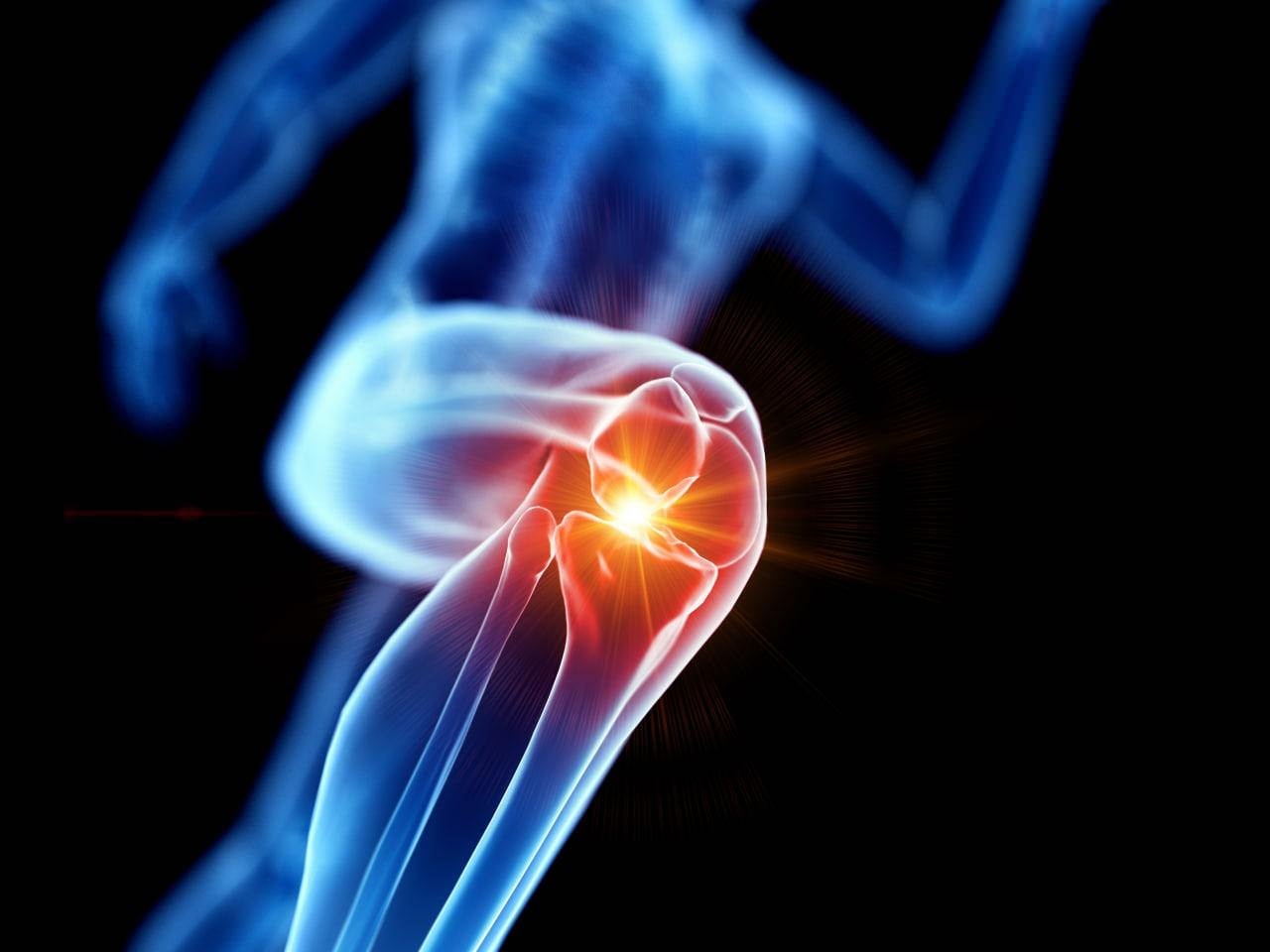
Osteoarthritis in the knee joint can be treated medically or surgically (methodmethod depending on the stage of the disease). In addition, it is important to maintain the muscles around it joint. This reduces the stress on the cartilage and therefore slows the progression of the disease.
Non-surgical treatment of knee osteoarthritis
Initial stage Osteoarthritis is treated with Conservative treatment options. The first step is to make lifestyle changes to slow the progression of the disease. Diseases. It is recommended to:
- Strengthening the muscles around the knee joint It is advisable to strengthen the muscles around the knee joint. – Swimming and Nordic walking are particularly helpful;
- avoid weight-bearing sports;
- Normalization of body weight if it is too high.
In addition, medications are used Treatment and saturation of the body with nutrients – vitaminsMinerals and nucleic acids – the building blocks of proteins – to saturate. These nutrients must be obtained through food. Unfortunately, modern diets cannot provide them with sufficient vitamins and minerals. vitamin– Mineral and protein reserves of the body. Over time, deficiencies develop that initially disrupt the functional and then the morphological status. Therefore, in the case of arthritis It is therefore important to ensure the absorption of healthy starch into the body to create optimal conditions for cartilage renewal.
Medication for osteoarthritis
medication for arthrosis are divided into 3 main groups:
1. Painkillers medication;
2. chondroprotectors;
3. Hyaluronic acid.
Analgesics drug Analgesics are used systemically to relieve pain - the main symptom of osteoarthritis. Symptom of osteoarthritis.. However, these agents cannot stop the progressive destruction of the cartilage plate. In addition, non-steroidal medicationwhich are often prescribed for pain relief, have serious side effects. serious side effects. This is especially true for the development of secondary gastric ulcers and gastric bleeding. Therefore, if possible, the frequency of the intake non-steroidal medication be kept to a minimum.
materials
When buying, you should pay attention not only to the size and type of bandage, but also to the material used, which can be natural or synthetic. The most commonly used materials are:
- Animal wool, absorbing moisture, has a warming effect on the joint, relieves inflammation by releasing active ingredients and, most importantly, improves blood circulation;
- Polyester – a type of man-made fabric that is very easy to use. It is considered the most reliable fabric, but it has no warming effect and is very expensive;
- Cotton is a vegetable fabric and is considered the most comfortable, it is waterproof and has useful properties, but it also has major disadvantages: it is short-lived and has no elastic properties;

- Nylon is one of the most durable and flexible materials, but is made from synthetic fabrics;
- Elastane is highly elastic and fits closely to the skin, allowing the skin to breathe;
- Neoprene, a type of artificial fabric, is warming and highly elastic, but can potentially cause allergic reactions.
Many experts recommend purchasing a knee brace made from animal fabrics, but your individual needs should influence your choice.
Proper use

To achieve the desired effect, it is important to follow the rules when using knee pads. Doctors give the following recommendations:
- Use additional medications to treat osteoarthritis.
- Do not use for more than 3 hours in a 24 hour period.
- The duration of treatment depends on the recommendations of the specialist.
- If allergic reactions occur, immediately contact the clinic and choose a bandage made of a different material.
- Strong pressure on the joint is prohibited.
- Wash the wound by hand at a temperature not exceeding 40 degrees and use only high-quality detergents.
- Do not dry on radiators.
Maintain a healthy lifestyle so that both the body in general and the musculoskeletal system in particular function well. If you are indeed suffering from joint pain, choosing the right plaster casts by a specialist and further application according to the basics will help you relieve your discomfort.
Read more:- Knee massager for arthritis.
- Salon orthopedic orthopraim reviews.
- Medico Ortho reviews.
- Femoral collateral ligament.
- How to wear a knee brace for osteoarthritis.
- recurrence of joints.
- Orthopedic shoes reviews.
- How much does knee surgery cost?.
